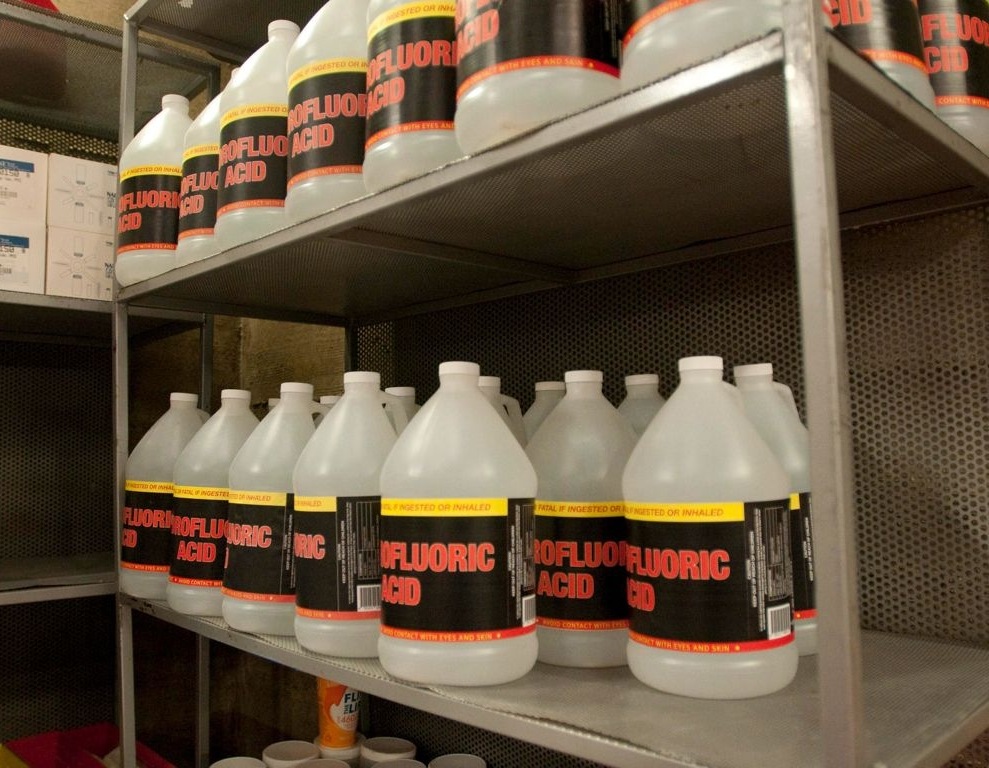Hydrofluoric Acid (HF)
The acid I am going to write my blog about is hydrofluoric acid. It's an acute poison. The boiling point of this acid is 67.1 Fahrenheit and the melting point is -118.4 Fahrenheit. It is either a colorless gas or a fuming liquid with a strong foul odor. This acid can be absorbed through the skin or ingestion. Symptoms are irritation of eyes, nose, throat, skin burns, rhinitis, bronchitis, bone changes, cough, dizziness, headaches, nausea, shortness of breath, sore throat, vomiting, shock or collapse. This acid is corrosive and acts violently with bases. Hydrofluoric acid can cause fire and explosion. It may cause fluorosis in long term exposure. Over exposure can cause death. This gas has many uses, it is used in oil refining, organofluorine compounds, it is used in the production of high volume inorganic fluouride compounds, used as a pickling agent to remove oxides from stainless and carbon steals because of its limited ability to dissolve steal, and lastly is used for dissolving rock samples prior to analysis. Hydrofluoric acid is usually kept in plastic containers because it can dissolve metal, rock, glass, and ceramic. This acid is used multiple times in breaking bad to dissolve dead corpses.




